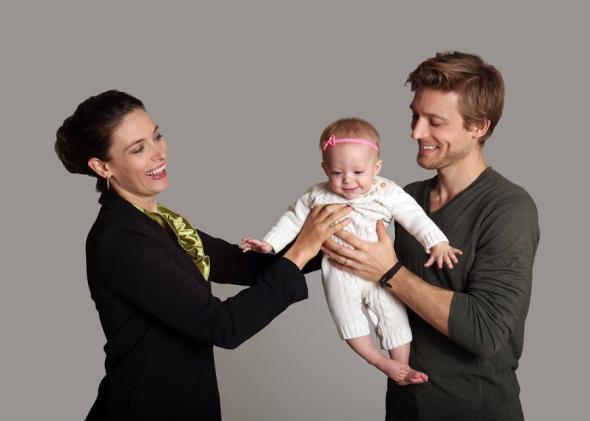Last week, the Labor Department released new data that showed the number of stay-at-home dads has fallen from its 2009 high. The Wall Street Journal has a couple of handy charts showing how stay-at-home dads surged from 2008 to 2009, but their numbers have fallen steadily since (though they are still above pre-recession levels). In 2009, in almost 1.79 million married couples with children under 18, the mother worked and the father did not; in 2013, that figure was down to 1.45 million. WSJ’s Jeffrey Sparshott wonders if “rising employment in male-dominated industries has lured some dads out of child care and back into the workforce,” as men were hit harder by the recession than women.
So what’s going on here? Were men only primary caretakers because they were out of work, or has there been a real shift in gender and caregiving expectations? The Labor Department doesn’t include any additional data in its employment characteristics of family survey beyond raw numbers of employed and unemployed parents, but a study published last year in the Journal of Family Issues suggests that it’s both those things at the same time.
Karen Z. Kramer, an assistant professor of family studies at the University of Illinois, looked at Current Population Survey data from 1968 to 2012. She found that there are two very different kinds of families that have stay-at-home fathers. The fathers who are actively choosing to be stay-at-home dads she calls “caregiving stay-at-home dads.” The fathers who are at home by circumstance she calls “unable to work stay-at-home dads.”
Caregiving stay-at-home dads are wealthier and better educated. The moms in caregiving SAHD families made almost twice as much as the moms in unable-to-work SAHD families from 2000–2012, about $76,320 compared to $38,960 per year. Unsurprisingly, caregiving SAHDs were also more likely to have wives with a higher level of human capital than they had, which means that their wives are better educated and have better job prospects than they do.
According to Kramer’s analysis, unemployment rates are unrelated to the probability of having a caregiving SAHD family compared with having a stay-at-home mom or dual-earner household, but they are definitely related to the probability of having an unable-to-work SAHD family. With every 1 percent increase in unemployment, the probability of an unable to work SAHD family rose by 8.1 percent.
What was related to the increase of caregiving SAHDs? Time. The proportion of caregiving SAHDs started rising in the early ‘90s with no relationship to unemployment. It makes sense that as our cultural notions about caregiving have somewhat evolved and as women gained ground in the workplace, more men have become the at-home spouse. And it also makes sense that men whose wives make less than $40,000 a year would be excited to get back to work when they had the opportunities.
